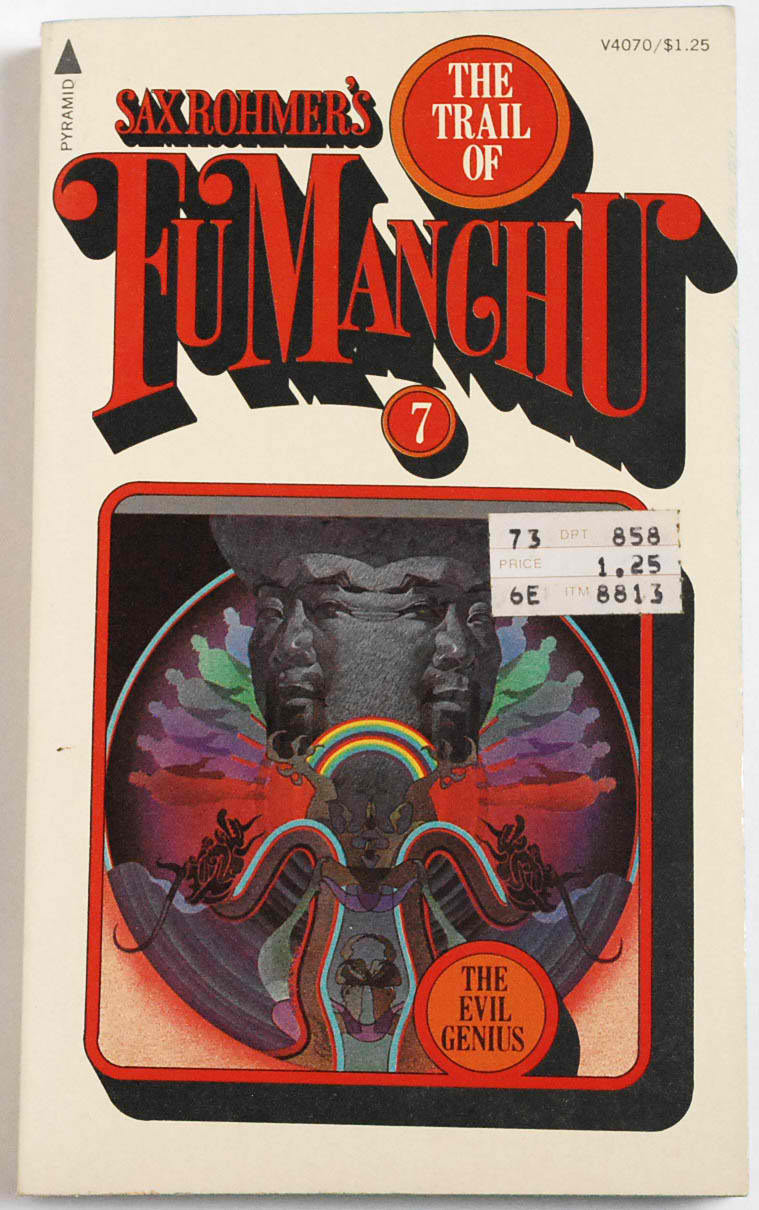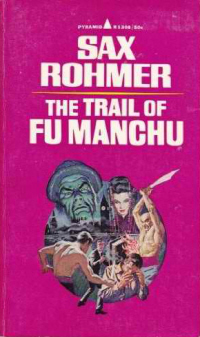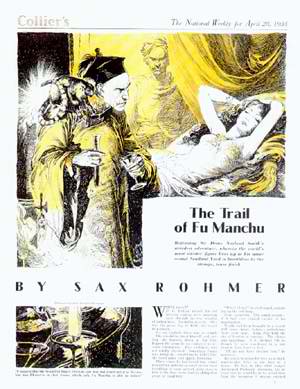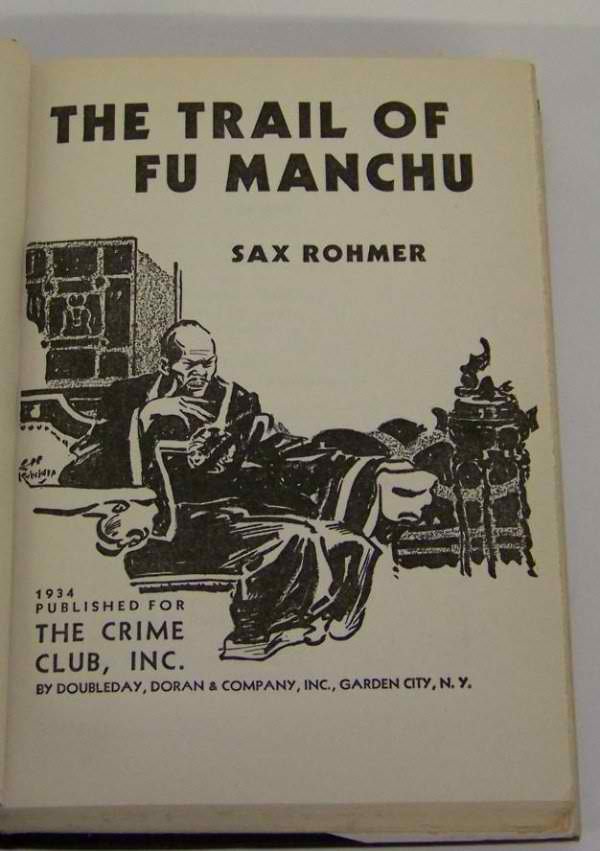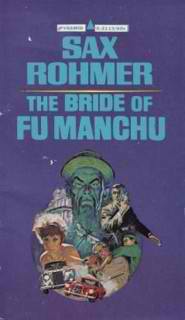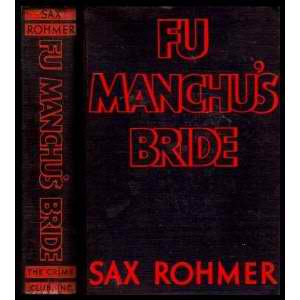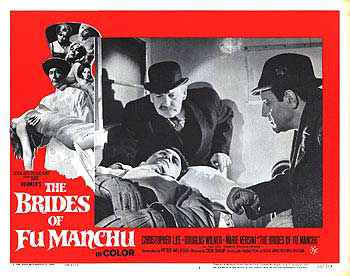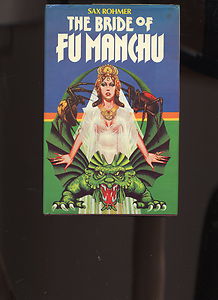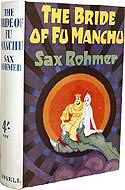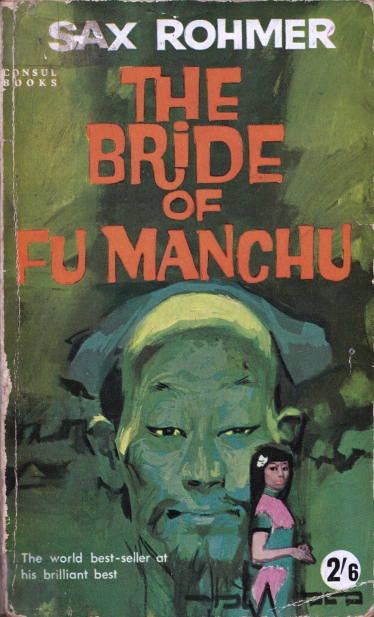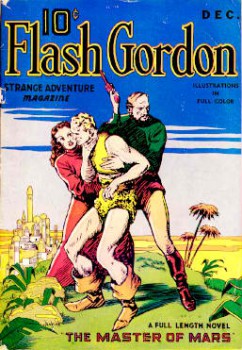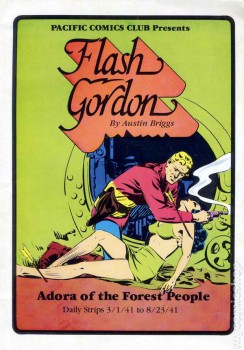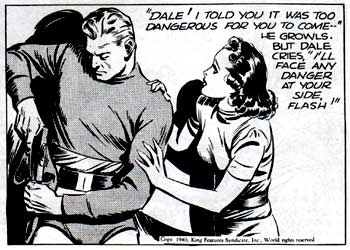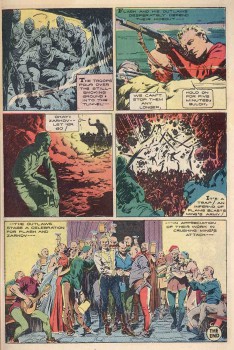Blogging Sax Rohmer’s The Trail of Fu Manchu, Part Three
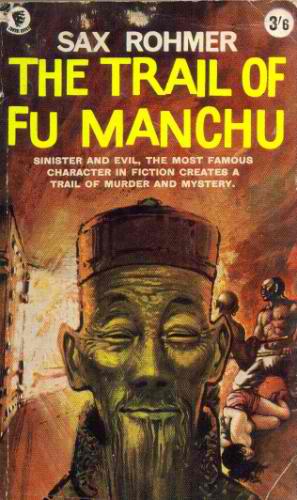
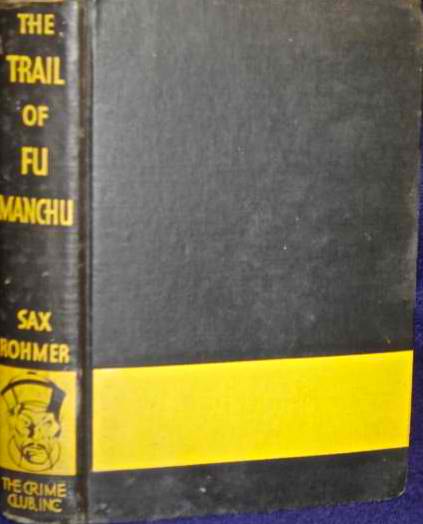 Sax Rohmer’s The Trail of Fu Manchu was originally serialized in Collier’s from April 28 to July 14, 1934. It was published in book form later that year by Cassell in the UK and Doubleday in the US. The book marked the first time Rohmer employed third person narrative in the series and dispensed with the first person narrative voice modeled on Sir Arthur Conan Doyle’s Sherlock Holmes stories. The results dilute what would otherwise have been a stronger novel that saw the series return to its roots.
Sax Rohmer’s The Trail of Fu Manchu was originally serialized in Collier’s from April 28 to July 14, 1934. It was published in book form later that year by Cassell in the UK and Doubleday in the US. The book marked the first time Rohmer employed third person narrative in the series and dispensed with the first person narrative voice modeled on Sir Arthur Conan Doyle’s Sherlock Holmes stories. The results dilute what would otherwise have been a stronger novel that saw the series return to its roots.
Chief Inspector Gallaho leads a police raid on Sam Pak’s opium den and begins the descent into the tunnel system below the Thames where Fu Manchu is transmuting base metal to gold in an alchemical process utilizing human bodies fed into a giant underground furnace. Alan Sterling has been sent to labor in the boiler room while Sir Denis Nayland Smith has been condemned to death alongside Fah lo Suee, Fu Manchu’s treacherous daughter. Sir Denis is puzzled why Fah lo Suee has forfeited her own life in a failed effort to save his own. He is startled when she confesses the reason is that she has loved him for many years as the man who did not fear to stand up to her father.
Sterling succumbs while working in the heat of the boiler room and awakens to find himself bound and sharing the same cell with Sir Denis and Fah lo Suee. Ali, Fu Manchu’s servant, who recognized Sterling and delivered his message to Sir Denis, is with them. They watch in horror as Fu Manchu orders Ali’s execution. He is first decapitated and then his body is thrown into the furnace.
